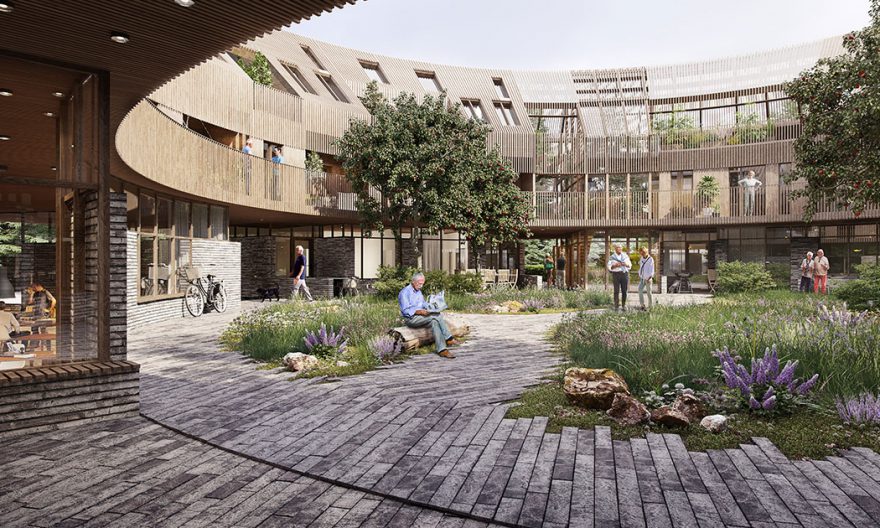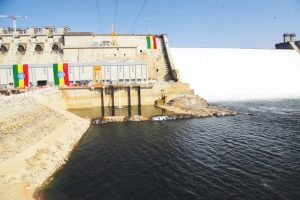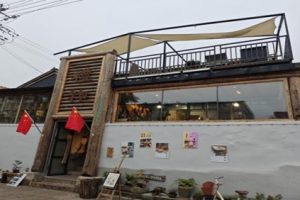
Ethiopia is one of Africa’s fastest growing and most vibrant economies. It has been enjoying high GDP growth for the past decade, with a quickly growing population. The country is expected to become a regional leader in construction. The government has made massive investment in infrastructure and residential building projects. Rapid urbanization has created a huge demand for improved infrastructure systems and housing construction.
The demand for high quality building materials is on the rise and is expected to grow fast. But, Ethiopia is heavily dependent on imports of most of the building materials it needs. Billions of dollars is being invested in the construction industry each year, and the TPLF firms are enjoying the high demand as they dominate the sector as suppliers.
Ethiopia has the second largest population in Africa, which has an extremely young average age. This young population is a productive labor force, which has a “positive” effect for the construction industry.
As a fast growing economy, the middle and upper classes are set to expand the construction sector. With its expansion, the sector plays a key role in the creation of employment. With the expansion of the construction sector, the rest of the economic sectors also registered high growths, with the number of TPLF dollar millionaires skyrocketing. It is suggested that less than a tenth of the Ethiopians are members of the middleclass. There is also the “floating” class who could slide back into lower class status easily. Most of these are in the construction sector, residing in the urban area.
With urban population growing, it is likely to result in an increased demand for affordable housing. This calls for the expansion and modernization of the construction sector. Ethiopia is one of the developing countries with high economic growth forecasts with growing demand for construction activities such as economic infrastructure and housing facilities. Though the economy is still dominated by agriculture, urbanization is growing with the share of the construction industry in Ethiopia’s GDP increasing. Investment in infrastructure is a prime driver of GDP growth in emerging economies, including Ethiopia. The country has one of the highest levels of investment, relative to GDP, in the developing countries. The major investors in the construction sector are the TPLF functionaries and affiliates.
With huge investment in infrastructure, Ethiopia has made massive steps towards boosting power supply, housing stock and transport networks. This in turn has led to improved job opportunities in the construction sector, which has had a positive effect on GDP growth. Foreign direct investment played a key role in the construction sector that contributed to the Ethiopian economic growth. A variety of different countries have invested in the sector in recent years. A massive increase in investment stimulated economic development including opening Ethiopia to international investment, bilateral trade and so on. Ethiopia has created several economic projects designed to boost and sustain economic development with external assistance. But, this assistance has been misused and abused by the TPLF functionaries, operating in various sectors of the economy.
A sustainable development environment enhances economic growth that strengthens the construction sector. Studies have identified several areas that require expansion to further strengthen the economic development of the country. It is believed that boosting saving rates fed into higher investment levels and greater economic growth in the country. Increased private sector investment, particularly in the construction sector, has been dominated by the ruling TPLF contractors as mentioned earlier. Internal infrastructure developments, such as road construction, have benefitted the ruling junta. It is suggested to develop a strategy for the construction sector the will remove abuse of power.
As mentioned earlier, foreign direct investment (FDI) inflows to Ethiopia have grown considerably in the construction sector. The interest from foreign firms looking to invest in the sector can be seen in the recent investment data. The main trading and investment partners have tended to engage in the construction and infrastructure programs of the country. Ethiopia has attracted the largest investment in the construction industry in recent years. The country’s policy to boost FDI has been successful in attracting foreign investment for infrastructure projects including small dams that are expected to generate electricity. Investments in infrastructure such as railway projects have been essential part of creating sustainable economic growth in Ethiopia. Much of the investment in developing Ethiopia’s infrastructure should be protected from local partisan interference.
Studies indicate that there are a number of factors that make construction sector attractive for foreign investors. These include cheap labor and wages, inexpensive power and supportive government policies for the sector. Moreover, the government revises regulations that reduce the inflow of FDI into the country, particularly to the construction sector. New and favorable policies would create an environment improving Ethiopia’s global standing on ease of doing business index. Foreign investors would find it conducive to invest in the construction sector in Ethiopia, which is known for its comparatively low levels of crime and corruption. The country is also committed to fostering a competitive, favorable environment for international investment, as the cost of skilled construction workers is very low compared to other countries.
Construction will play a key role towards achieving the country’s economic prosperity goals. It is also expanding rapidly. Ethiopia’s construction sector is one of the robust economic sectors in Africa. Conditions are ripe for a surge in building across the country.
The upgrading and building of new infrastructure links, residential developments and so on is considerable. The development of the sector features heavily in the development plans of the country. According to studies of the sector, Ethiopia is set for further building-related growth in the future. It is estimated that the country will maintain its status as a “regional growth outperformer” by achieving real growth. The studies suggest that Ethiopia will also enjoy high growth in the future, provided that the beneficiaries of this growth are not the private construction enterprises associated with and owned, supervised and abused by the TPLF.
Studies indicate better opportunities for construction in Ethiopia. It is expected that massive foreign investment will be required to fuel this growth. Alongside attracting overseas investors, the strategic goal is encouraging the development of the construction industry. The sector becomes more attractive through reduction of costs by increasing the capacity, efficiency, effectiveness and honesty of contractors.
The application of modern management system in construction programs and projects is of the essence. Such a management system introduces a continuous improvement of working practices, personal efficiency and effectiveness. This strategic direction fosters a competitive construction environment in Ethiopia. It also reduces the role of the TPLF undercover enterprises, partisanship and corruption in the sector.
Efficiency in program and project management attracts international contractors to enter the construction sector. This entices foreign contractors to directly engage in construction than through consultancy as they used to do in the past. The quality and honesty of Ethiopian consultants in the construction sector is very critical to ensure the safety of buildings, roads, bridges and small dams. Also, the enterprises engaged in the production of construction inputs have to be strictly controlled to prevent and avoid shoddy materials that are dangerous to the lives of construction workers. Inputs imported by the TPLF owned enterprises have to be closely inspected and rechecked before use in the construction projects. These inputs are mainly iron, cement, electrical wires, pylons, towers, pillars, rails, tubes, etc.
Improving the construction capacity enhances not only the efficiency and effectiveness of the sector, but also procurement and management of building materials domestically and abroad. Developing the competency of domestic contractors to compete and win international contracts helps the country to earn foreign exchange. An important component of the construction sector is to develop the capacity of local consultants in the design and follow up of project implementation.
Equally important is improving the availability of building materials and machinery at the project sites on time. This requires efficient and computerized store management system with qualified staff. With focus mainly on infrastructure and housing initiatives, Ethiopia’s economy will continue on its impressive upward growth. This trend calls for parallel development in the services sector such as modern hotels, wholesale and retail trade and other firms could see a big boost in construction levels.
Ethiopia should remain a leading country in Africa in the construction activities. But, it should be noted that nearly three quarters of all construction materials are imported. Studies show that these imports include cables, steel, ceramics, locks, furniture and electrical fittings as mentioned earlier.
All these building materials are critical for the completion of the lofty building and infrastructure objectives. Infrastructure investment accounts for a huge government construction spending. It is reported that billions of dollars are being invested in infrastructure. Several construction projects began in the last decade under the guidance of the development plan of the country especially for energy infrastructure construction.
Most of the construction investment is earmarked for power generation projects. Ethiopia has the potential to become a massive supplier and producer of energy to the neighboring countries. Major power-producing construction projects have been finished or are underway or in the planning stages. One of these construction projects is the Grand Ethiopian Renaissance Dam (GERD) for hydroelectric development.
The Ethiopian government is undertaking the major construction of the GERD with determination, from its inception to its finalization. The evil intent of the TPLF toward the project is obvious, even after being driven out of the center of power. This project is a glorious sign of independence from the dictation of foreigners with hidden motives. Ethiopians are the sole source of finance for the construction of GERD as the international financing institution refused to give loans for financing it.
It will be a source of pride for all Ethiopians as the dam is completed to help alleviate poverty that reigned in the country. Like the Battle of Adwa, the completion and use of GERD will be a great sign of honor and victory for both the people and government of Ethiopia. Ethiopians will win the Battle of GERD, despite the obstruction and hostility of the arrogant superpower and its local contemptible, despicable, disgraceful and shameful agents.
BY GETACHEW MINAS
The Ethiopian Herald 10 September 2021





